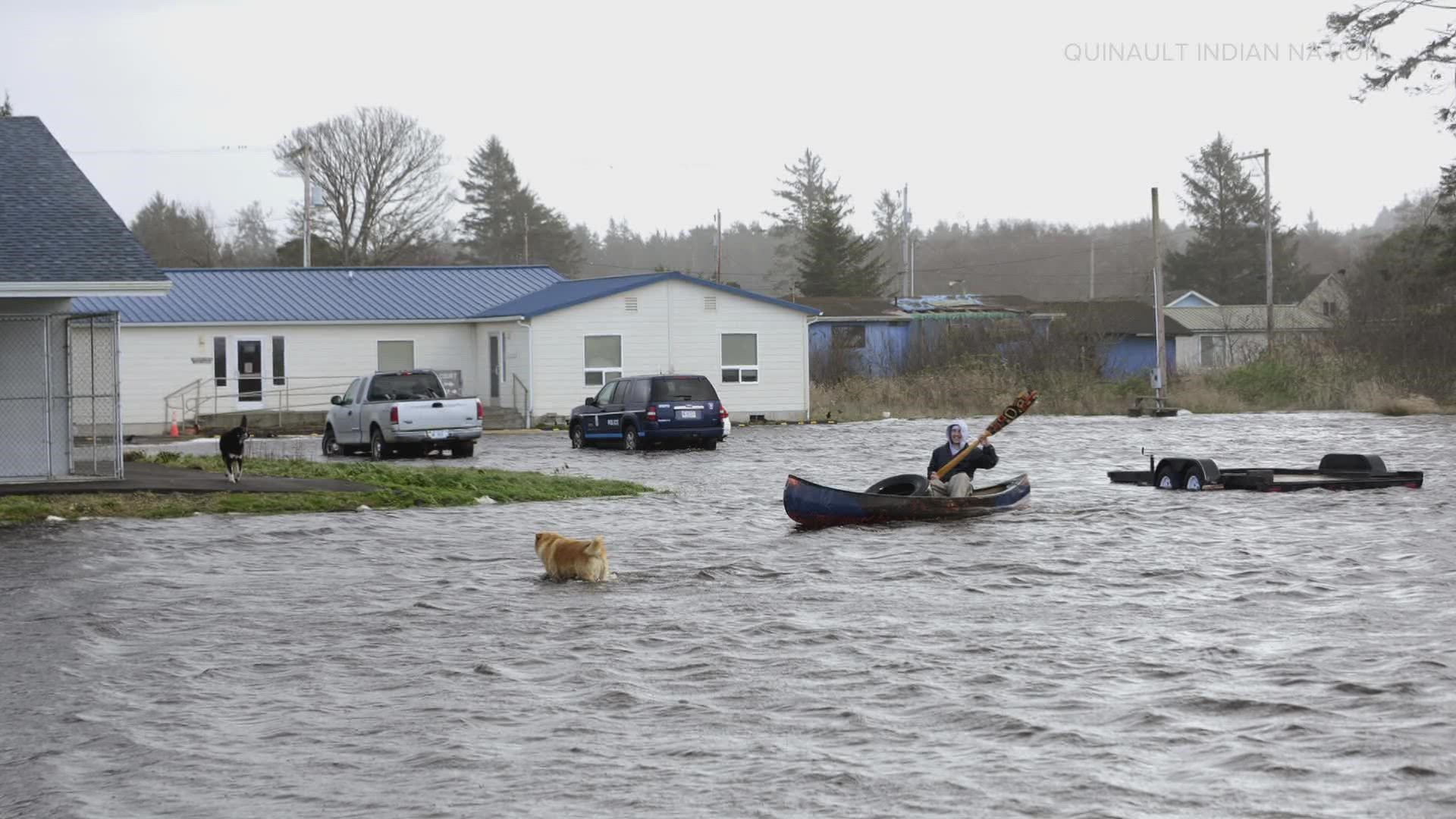TAHOLAH, Wash. — Members of the Quinault Indian Nation have lived and fished just off the beaches of the Pacific Ocean in Taholah for generations.
But it may be time to move.
“The relocation project is vital to our existence here,” said Ryan Hendricks, who is heading up the construction of 59 homes in the hills above the coastal village.
The Quinault have plans to build another 150 homes, enough for all the families and the estimated 660 residents who live near the beach, on higher ground about a half-mile from the beach.
“Slowly start bringing everyone out of the ‘scary zone,’” said Hendricks.
Tsunami risks have always been a concern, said Hendricks, but recently, winter storms have brought flood waters to the village, despite a seawall between the beach and homes.
“Once we start ripping into the king tides, with lots of precipitation, it tops the top of this [seawall] pretty easy,” said Hendricks.
Kaylah Mail is about to leave the home her grandparents built. She doesn’t feel the home is safe for her family anymore.
“There’s been king tides where they’ve evacuated us, came to our house, knocking on the door at 11 at night saying, ‘You need to leave your house!’ It’s nerve-wracking, it’s terrifying and my kids are absolutely the first thing I think about,” said Mail.
The Quinault Indian Nation used $10 million of the tribe’s funds to build the Generations Building on higher ground last year.
It houses a child care center, a senior facility and space that can be used as a potential tsunami shelter.
Federal funding from the American Rescue Plan is going towards infrastructure for the new housing development.
A Quinault Indian Nation spokesperson said the Bureau of Indian Affairs is expected to approve another $3 million for infrastructure.
The spokesperson said the Quinault Indian Nation has applied for additional grant funding from the U.S. Department of Housing and Urban Development (HUD).
If awarded, $2 million in HUD grants could establish water lines for the next phase of home construction. The tribe applied for an additional $7 million in potential HUD grants to be used for home construction.
Several tribes along the Washington coast are looking for federal funds to help with relocation.
“The Biden administration has really leaned into the work of climate change,” said HUD Regional Administrator Margaret Salazar. “We know that our region is suffering some very significant impacts from climate change.”
However, Salazar said there is insufficient funding to provide every coastal tribe with relocation funds.
“We are beholden to congressional appropriations, and how Congress is deploying these dollars in appropriating these funds,” said Salazar.
Tom Carney heads up HUD’s Grants Management Division for the Northwest Office of Native American Programs.
“There are so many competing priorities across the country, every tribe has their own unique set of circumstances that we have to provide our funding, the competitive funding, in a balanced and in [an] equitable manner,” said Carney.
Hendricks said his people, the Quinault Indian Nation members, deserve the funding.
“Even the move to up here is something we don’t really want to do, but after hundreds of generations, we’re going to need a little bit of help,” said Hendricks.

